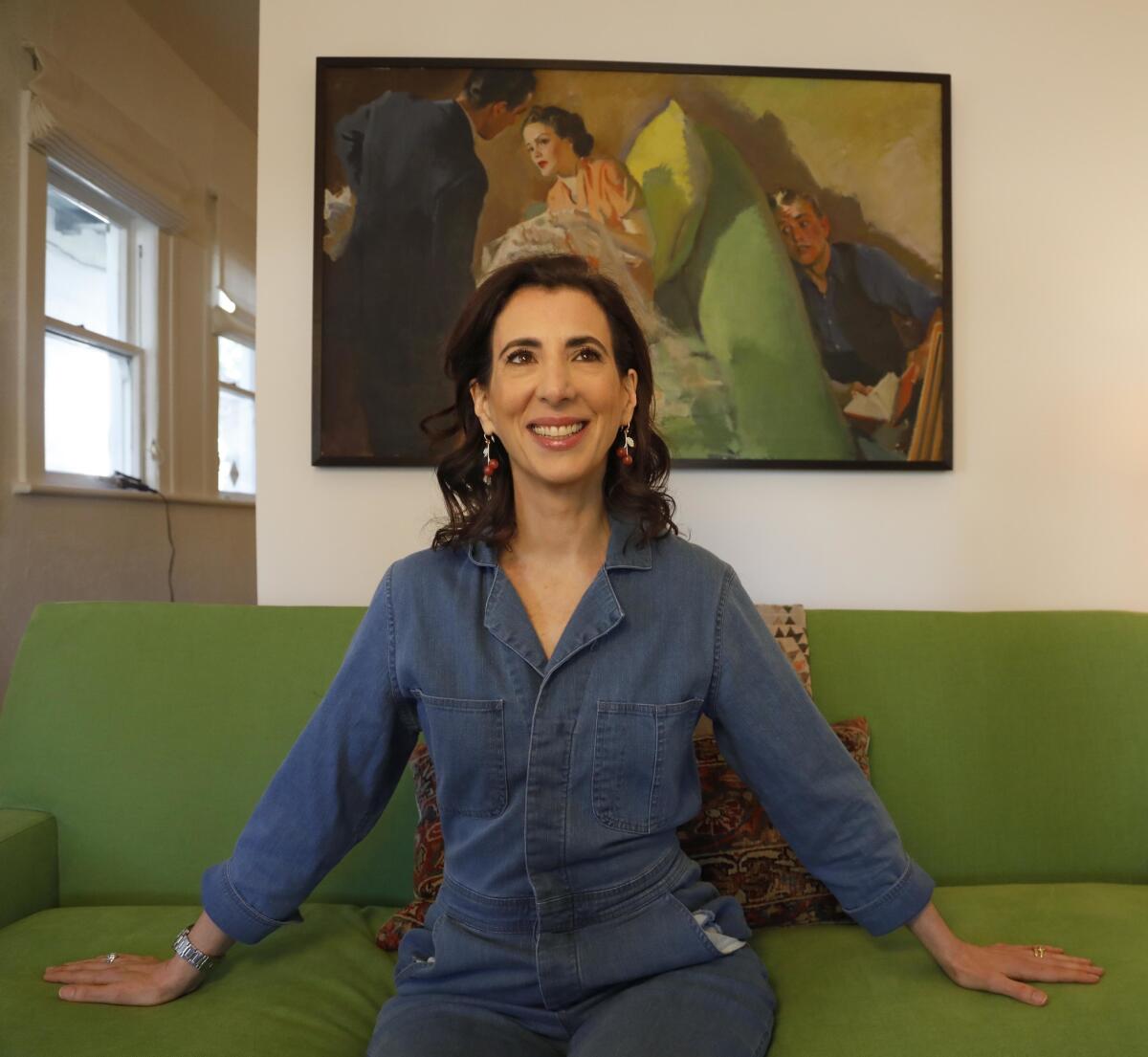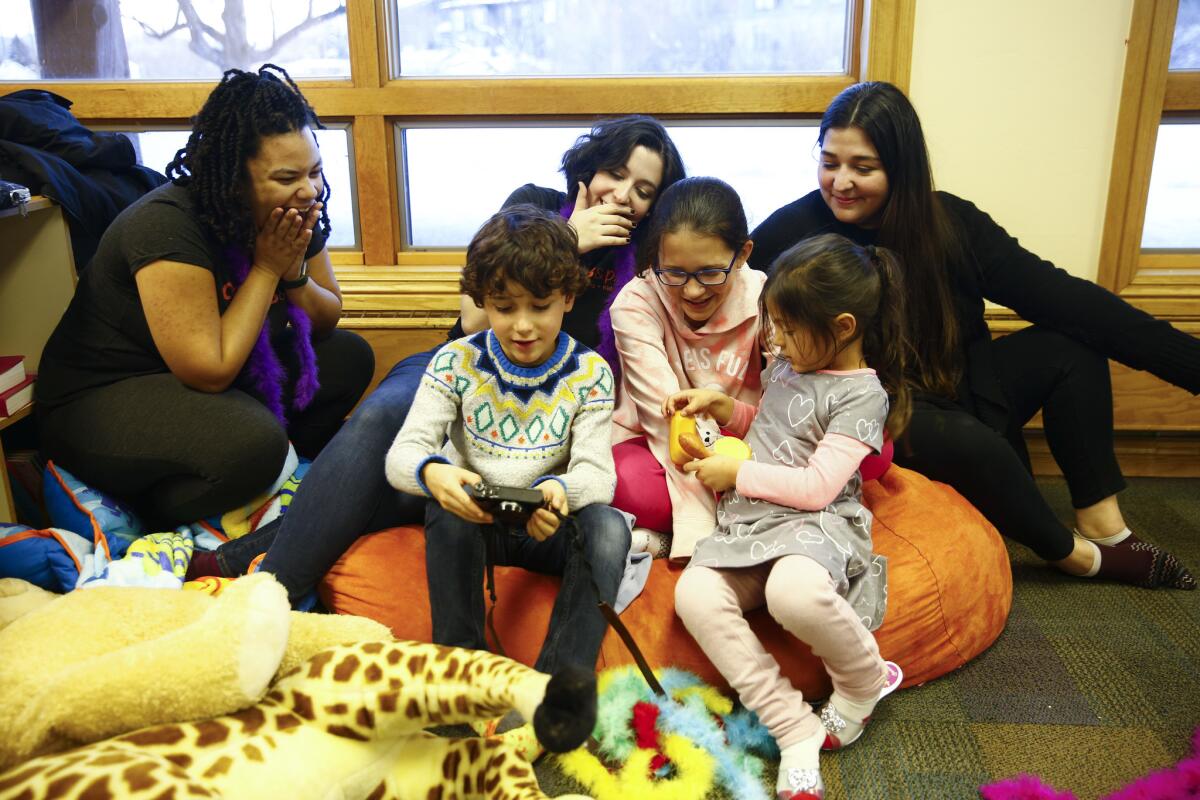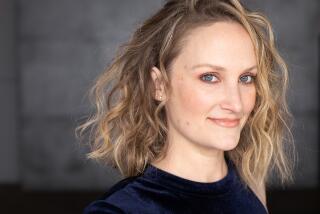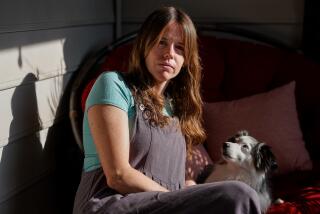Hollywood working moms and the brutal conflict between family and career

L.A. Times Today airs Monday through Friday at 7 p.m. and 10 p.m. on Spectrum News 1.
Nearly every mother in Hollywood has a horror story.
There was the time screenwriter and showrunner Aline Brosh McKenna was 8½ months pregnant and a studio executive joked, “I guess today would be a bad day to punch you in the stomach.” There was the time Nisha Ganatra, director of the upcoming Mindy Kaling film “Late Night,” went on a scouting trip to India when she was a new mom and found herself driving around the country in a van “with 15 dudes,” pumping breast milk in “a woodshed in the middle of a desert and an outhouse behind a restaurant.” There was the time a dream job offer fell through for Oscar-nominated “Mudbound” cinematographer Rachel Morrison because producers panicked that she’d be going back to work a few weeks after giving birth — something she was willing to do to help realize one of the most exciting scripts she had ever read. The experience, she says, “made me acutely aware of the prejudices in this industry, specifically in my line of work.”
Being a working parent in the United States, the only developed nation in the world without a federal paid parental leave policy and where the cost of childcare can consume a single paycheck, is challenging no matter one’s gender or line of work. It is especially hard on mothers, who are more likely to rearrange their work schedules to take care of their families and, according to research, are often hit by a “motherhood penalty” — losing out on raises and job opportunities because they are perceived as less professionally committed than their child-free peers (and men with children). Numbers can vary, but a groundbreaking 2001 study by sociologists Michelle Budig and Paula England found a wage penalty of 5% to 7% (depending on experience) for each child a woman has.
For women in entertainment — an industry where the hours are grueling and unpredictable and travel to faraway locations is the norm — the conflict between work and family can be brutal. While executives at places like Netflix get generous paid leave and many studios have on-lot childcare centers, Hollywood is powered by an army of freelance artists and crew members who do not have reliable access to such perks.
Time’s Up and #MeToo have provoked long overdue conversations about inequality in Hollywood, but less attention has been paid to how a lack of support for families — especially mothers — in a competitive, male-dominated industry may be holding women back.
“The hours and the travel associated with production, coupled with a lack of resources, are a huge contributor to the gender disparity,” says Sara Fischer, head of production for Shondaland, the company founded by writer-producer Shonda Rhimes.
Workplace discrimination against women who are breastfeeding or pregnant is illegal, but women in a variety of roles in the business — from writers, actors and directors to below-the-line crew members — say they’ve faced significant challenges, skepticism and even outright hostility as mothers. Some, including a Netflix employee who recently alleged she was fired after becoming pregnant, have taken legal action.
On top of that, pop culture, for generations largely created by men, rarely seems to get motherhood right. (Would you believe not every woman’s water breaks with a dramatic gush?) The word “pregnant” was once too vulgar for “I Love Lucy,” but thanks to female-led shows, including “Better Things,” “I’m Sorry” and “Jane the Virgin,” which depict the ups and downs of parenthood with bracing honesty, and performers like Amy Schumer and Ali Wong using their pregnant bodies as comedic weapons, that is beginning to change onscreen.
And now some powerful women in the business are trying to transform a Hollywood culture they see as antithetical to parenting by working throughout their pregnancies, creating kid-friendly workspaces, pushing for more humane, predictable hours and normalizing things like pumping breast milk on location.
In the room
At a time when television is driving the cultural conversation, the writers room is a bubbling cauldron of creativity, but for parents it can also be a kind of prison. In contrast to screenwriters, who generally work alone and make their own hours, TV writers are often subject to the whims of showrunners who may or may not appreciate demands like a school pickup or a third-grader with the flu.
“This is an industry that does not protect the interest of parents,” says Brosh McKenna, co-creator and showrunner of “Crazy Ex-Girlfriend” and the mother of two teenagers. “I think there is a culture that glorifies the amount of suffering and misery it takes to make stuff in Hollywood — people thrive on chaos and complaining.”

In the heavily caffeinated, takeout-fueled environment of the writers room, absurdly long hours can be frittered away in the search for “creative inspiration.” Close quarters can make it intimidating to, say, take a break to pump breast milk — especially when the boss is a man. According to the Writers Guild of America West, women are still underrepresented in TV writers rooms, constituting 24% of showrunners and 36% of writers in the 2017-18 season.
Brosh McKenna says the punishing culture of the writers room is a major reason why she spent so many years making her own hours as a screenwriter (“The Devil Wears Prada”), rather than getting a staff job in television. “There was no way for me personally that I would sit there knowing I wanted to be home at 5 but having somebody in charge who wanted to play darts and watch YouTube Videos.”
Combine grueling, unpredictable hours with an atmosphere of widespread sexual harassment — a survey last year by the WGA West found that 64% of female writers had experienced workplace harassment — and it’s little wonder gender parity seems so far off. In October, “NCIS: New Orleans” showrunner Brad Kern was fired for a string of harassment allegations, among them, allegedly bullying a nursing mother on his writing staff.
“We tell women they should expect to go to work and have their ass pinched and not see their children,” Brosh McKenna says, “I definitely think it’s keeping women out of the business.”
Virtually all writers in television are freelance contractors with little job security, which makes family planning difficult. The Writers Guild recently negotiated a policy that allows staff writers on episodic television the right to take up to eight weeks of unpaid leave to take care of a new child and guarantees they can return to their original position — that is, if it still exists.
“You can get fired between seasons and there’s nothing you can do about it,” Brosh McKenna says.
And working while expectant can be complicated, even when you’re the boss.
Liz Tigelaar was hired as showrunner on the Hulu comedy “Casual” when she was early in her first trimester and excited about the job, which would keep her busy until baby arrived. Having faced a long road via IVF and uncertain the pregnancy would stick, she kept the happy news to herself. But her exhaustion was intense, so Tigelaar occasionally resorted to napping on a foam egg crate in her car because she didn’t have a private office, just a shared writers room.
In her job as showrunner of the upcoming Hulu series “Little Fires Everywhere,” she’s taken family schedules into consideration, choosing a writers room in a convenient location for her overwhelmingly female staff rather than one in Venice, near her home.
“Accommodating a room around parents — and really mothers, because I feel like mothers have a different thing going on, whether people want to admit it or not — is really important,” she says.
As one of TV’s most powerful showrunners and a single mother of three, Shonda Rhimes has attempted to foster a parent-friendly work environment because, she says, “It’s a ridiculous idea to pretend that everybody is childless and to pretend that childcare is free and simple and easy to get.”
On the set of shows like “Scandal,” nursing rooms and playrooms are standard. She has had crew members build bigger porches on the trailers for pregnant actresses so they wouldn’t have to teeter on narrow, unstable steps.
“It’s part of the culture here that nobody’s going to blink if there’s a kid in the office playing on the floor rolling a car,” she says of Shondaland, where employees are welcome to bring children. “That’s born out of the fact that when I wrote ‘Grey’s Anatomy,’ I wrote it with a baby strapped to my chest. She learned to walk up and down the hallways of ‘Grey’s.’ For me, that was the way this was going to work.”
On set
Sara Fischer likes to say she has a “St. Elsewhere” baby, a “thirtysomething” baby and a “Chicago Hope” baby. Now the head of production at Shondaland, Fischer is a TV veteran and mother of three who spent years on set as an assistant director in an era when the industry was even less hospitable to working mothers.
During one of her pregnancies, a producer on a network drama told Fischer she’d be fired if she was caught sitting down, so she sat while hidden by a system of apple boxes in case he came to set.
In the mid-’90s, when her youngest child was a newborn who nursed constantly, Fischer was asked to work on the pilot for “Buffy the Vampire Slayer.” She had two kids at home with a nanny and didn’t want to lose money by paying a second caregiver to come to set. So she hired a college student who was interested in production to watch the baby, put her in front of the lens each day, and paid her as an extra.
For moms who work in production, conditions have improved, she says, but largely in “cosmetic ways.” “There are places to pump, but what if you [can’t] take the time?”
Motherhood can feel like a liability in an industry where certain on-set roles are rarely held by women. Only 8% of the 250 top-grossing movies in 2018 were directed by women, according to the Center for the Study of Women in Film and Television. Female cinematographers shot a mere 4%.
“Late Night” director Ganatra says she knows of many other female directors who’ve hidden their pregnancies in interviews “because you know that it’s going to affect the decision to hire you or not, even though it’s not supposed to.”
Ganatra began filming “Late Night” when she was about halfway through her second pregnancy. She was editing throughout her third trimester and brought her infant daughter onstage at a screening of the film, which was acquired by Amazon for $13 million, at the Sundance Film Festival in January.
“Hire pregnant women,” she told the audience. “It’s OK.”
“I didn’t even stop to think how it was going to work with the baby,” she says in hindsight. “It just was a fact: The baby was coming and the movie had to be finished. Both things had to happen and both things did happen.”
While the pregnancy was relatively easy, Ganatra says it was more difficult being away from her school-age son. “If you’re doing a crazy 7 a.m.-to-8 p.m. day, then you get up before they wake up and you get home after they’re in bed. It’s really brutal.”
I didn’t even stop to think how it was going to work with the baby. It just was a fact: The baby was coming and the movie had to be finished.
— Nisha Ganatra
Since her son was born four years ago, Morrison has become the first woman nominated for an Academy Award for cinematography, for “Mudbound,” and also shot the groundbreaking blockbuster “Black Panther.” As her career was skyrocketing, she also gave birth to a second child, a girl, in August. She’s using her newfound clout to “start leading by example” as a parent, she says. “I need to create the path that I wish I had had to follow.”
She shot the Jean Seberg biopic “Against All Enemies” until she was 8½ months pregnant and was on a commercial set 36 hours before she gave birth. She was back at work a few weeks later and has found people far more accommodating to her needs the second time around, thanks to her rising profile. She has been offered a private trailer for breastfeeding, and her grips built her a little pump station at the dolly. But usually she just puts her pump on under a sweater in an effort to “normalize things.”
“I look ridiculous, like I’m in a Madonna music video, but it gets the job done,” she says.
Pumping is a short-term concern for those who choose to breastfeed, but childcare is an ongoing need for all parents on film and TV sets. An organization called Moms in Film has brought mobile childcare centers to South by Southwest and Sundance, and also advocates for budgets that include childcare stipends. “We want to create a safer work environment, so we can normalize parenthood alongside the process of our careers,” says co-founder Christy Lamb.

Even Morrision says she has turned down high-profile job offers because she doesn’t want to spend time away from her family and now finds herself wondering, “How do I keep pace with my male counterparts who by and large leave their families for months on end to do exciting jobs all over the world? It’s a real conundrum.”
On camera
Before she created her own series, the TruTV comedy “I’m Sorry,” Andrea Savage was a steadily working actress who appeared in dozens of films and TV shows. But she rarely had any control over her day-to-day schedule and often got her call time late at night, making it difficult to arrange care for her daughter. Savage now makes it a point not to write exterior night scenes for “I’m Sorry” “because those force the entire cast and crew to do splits [night shoots] where your days don’t start until 3 pm.”
Some stars are building on the conversation about pay equity by voicing the concerns of working mothers in the industry. Carey Mulligan, whose part in the Netflix series “Collateral” was rewritten to accommodate her pregnancy, has advocated for on-set childcare for cast and crew. Zoe Saldana has fought to include childcare in her contracts. If her male colleagues get trainers and bodyguards as perks, why can’t she have a nanny? A high-class problem, to be sure, but also evidence of a clear double standard.
ALSO: Working moms Gabrielle Union and Jessica Alba go into action for ‘L.A.’s Finest’ »
For actresses, the pressure of being on camera further complicates the decision to become a mother. Hollywood has never made it easy. Studio bosses were known to pressure stars like Judy Garland and Jean Harlow to have abortions because motherhood was thought to be incompatible with their personas — the wholesome girl-next-door and the bombshell.
In 1997, Hunter Tylo successfully sued Aaron Spelling’s production companies for pregnancy discrimination when she was fired from his prime-time soap opera “Melrose Place” after she became pregnant. A jury awarded her nearly $5 million. Lawyers for Spelling argued that she would have become too fat to persuasively play a seductress.
And more recently, “Price Is Right” model Brandi Cochran sued the show’s producers for pregnancy discrimination and, after a $7.7-million verdict was overturned, reached an out of court settlement in 2016.
“I have so many friends who are riddled with anxiety about pregnancy and the collision with their careers, who worry about being written out of shows so are scared to tell people, about having to lose the weight drastically quickly or not wanting to put it on,” says actress June Diane Raphael, co-founder of the Jane Club, a workspace designed for mothers.
She was pregnant while making the third season of the Netflix comedy “Grace and Frankie,” and her belly was digitally erased. While Raphael was grateful for the accommodation, she was also “keenly aware” of how much it cost. She believes working around a pregnancy shouldn’t seem so radical. “If you’re going to hire women in our childbearing years, when we have a ton to offer the world and the workforce, it’s not ‘amazing.’ It’s appropriate,” she says. For now, however, working moms are still finding their places in “ a workplace,” Raphael says, “that was never designed for us.”
And that’s not something Hollywood can easily fix in post.
Follow me @MeredithBlake
More to Read
The complete guide to home viewing
Get Screen Gab for everything about the TV shows and streaming movies everyone’s talking about.
You may occasionally receive promotional content from the Los Angeles Times.






